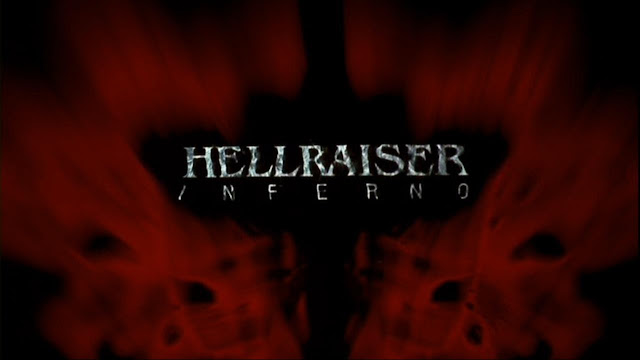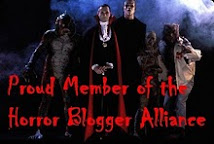Hellraiser: Inferno tells the story of a corrupt police detective who comes into possession of the fabled Lament Configuration puzzle box and, after a trippy night with a dreadlocked prostitute, finds himself trying to unravel plenty of hellish mysteries. While most of the Hellraiser films that preceded this one - all of which had bigger budgets and theatrical releases - took their characters into hellish realities, Inferno keeps our lead character based in reality and brings hell into his world.
Compared to the rest of the series, a literal Hell comes slowly into this character's world - the iconic visage of Pinhead only appears briefly near the end and visions of some new cenobite characters are spaced out by real world drama - but Inferno always finds unique ways to surprise our shady lead character. He's played by Craig Sheffer, formerly a "future star" in films like The Program and A River Runs Through It and before that the star Hellraiser creator Clive Barker's awesome Nightbreed, who has always seemed pretty slimy to me and seems more slimy than usual as he carries this film. He's got a pretty good supporting cast around him, including Nicholas Turturro and the great James Remar, but it seems like most of the scenes in the film revolve around Sheffer looking angry and confused as he faces new and ridiculous surprises that come with the puzzle box he has opened. Does that sound like a bad thing? It does kind of sound bad, but it really isn't. Sheffer is a bit challenged in the charisma department...which is great when he's playing a doomed soul who the viewer doesn't have to like.
The film is co-written and directed by Scott Derrickson, who has gone on to make two quality Hollywood horror films, The Exorcism of Emily Rose and Sinister (and one terrible, terrible, completely terrible remake that I will not name here despite the fact that it featured Keanu Reeves speaking Chinese to James Hong). All three of Derrickson's horror films are about dudes who are actively pursuing a horror that has entered into their every day world, which makes Hellraiser: Inferno a bit interesting as a case study in how the director got where he is over the last 13 years. Derrickson's characters are never sharp or punchy like so many modern characters in the post-Tarantino film universe, and there's something refreshing about his willingness to just make these characters feel like they came out of an older and more restrained cop drama. With the exception of their hairstyles, characters in the Hellraiser series have been best when they're normal looking, and Derrickson allows Sheffer to be average enough to keep the film feeling like it's more than just another cheap sequel.
The film feels interesting to horror fans like myself because creepy stuff and cenobites keep popping up throughout the film, but there's more to this plot than that. We don't travel into any hell dimensions like we did in the overambitious Hellraiser II, and Derrickson and Sheffer manage to keep the film feeling like a crime drama while they provide enough gory and unsettling images that make us squirm. Most of the creature makeup is top notch, and there are plenty of new and unique creations that advance the cenobites as a race and prevents the film from just rehashing what we've seen in the first four films. And, at the same time, the gritty plot could even be called "Hellraiser noir" as the seedy side of the detective's world mixes with the cenobites while the star's drab narration pushes the story forward. Like film noir, the lead character's existence seems to spiral downward rapidly through the film's finale, which attempts to push the legend of that little puzzle box and it's spike-headed friend to new places while dragging the corrupt man down into Hell.
Hellraiser: Inferno never really manages to wow us, but at the same time it's one of those horror movies that's simply never dull. It feels unique, especially as an addition to a series that had been off the rails for a couple of films (and was about to derail once more), which helps make the blood splatter a little brighter and the grimy detective's plight a little more engaging. It might just be a case of being in the right place at the right time - this movie would be a disappointment in a better franchise but seems like a standout against some of the more awful Hellraiser sequels - but Hellraiser: Inferno has always managed to stick in my mind as one of those horror sequels that's good enough to make you not care you're watching something that's not that first thing that you loved. And that's enough for me to give this sequel a solid recommendation to horror fans.
(Usually the trailer goes here, but Dimension Films was god awful at trailers and spoiled like half the movie in their 47 second teaser for this one. Good job, doofuses. Instead, here's a short Hellraiser "fan film" that I love which was made by special effects guru Gary Tunnicliffe...)



































